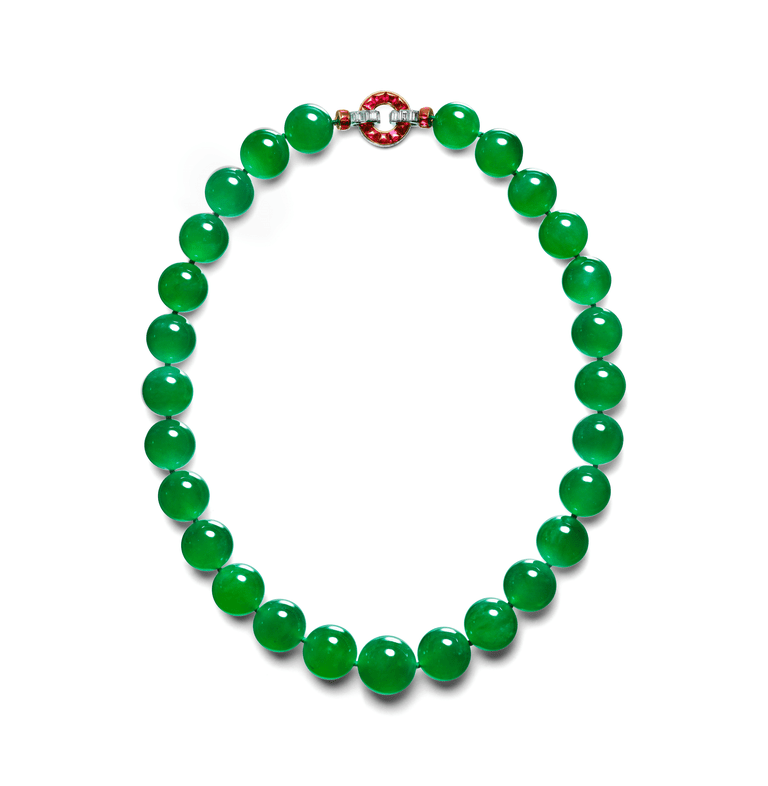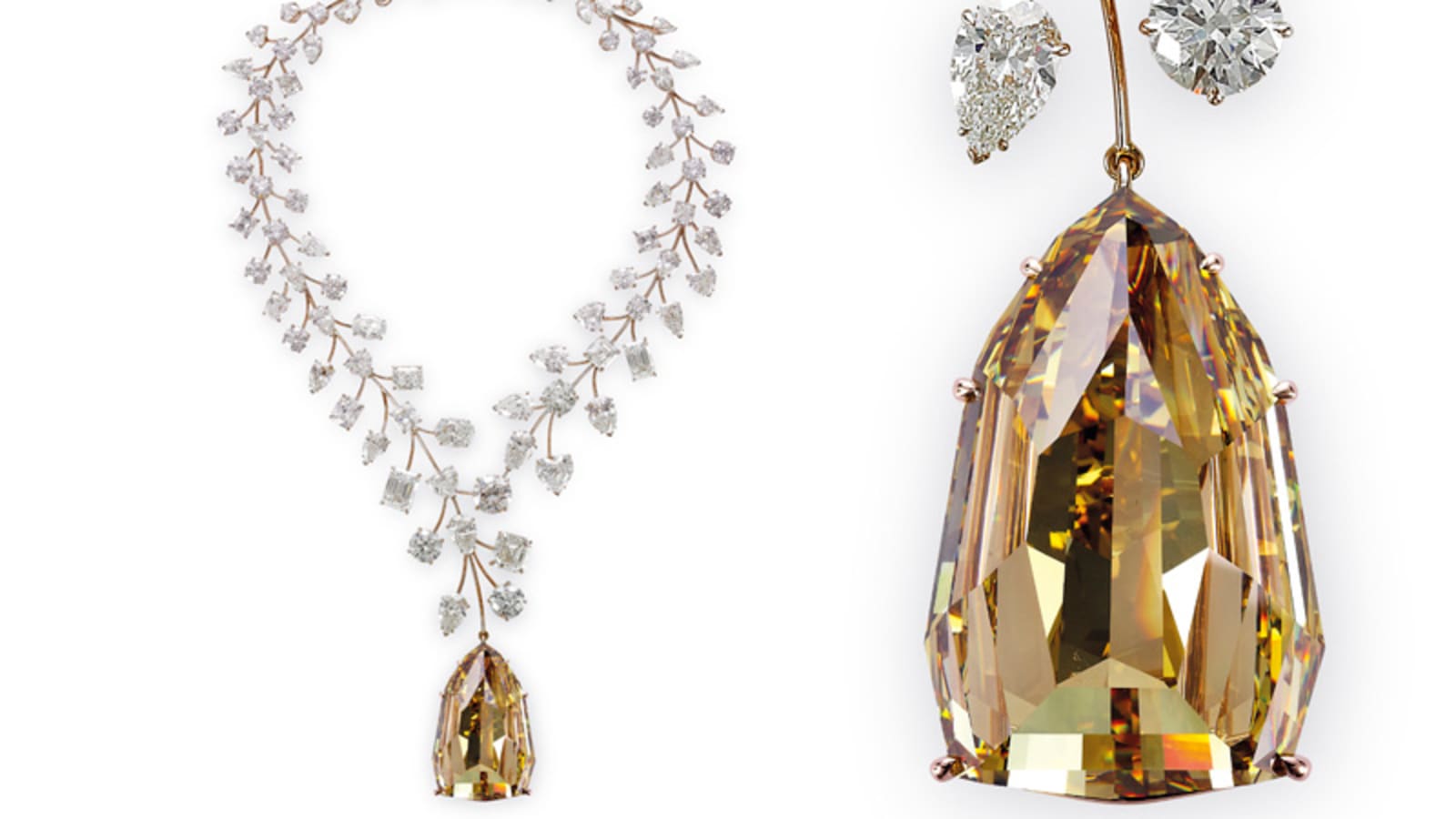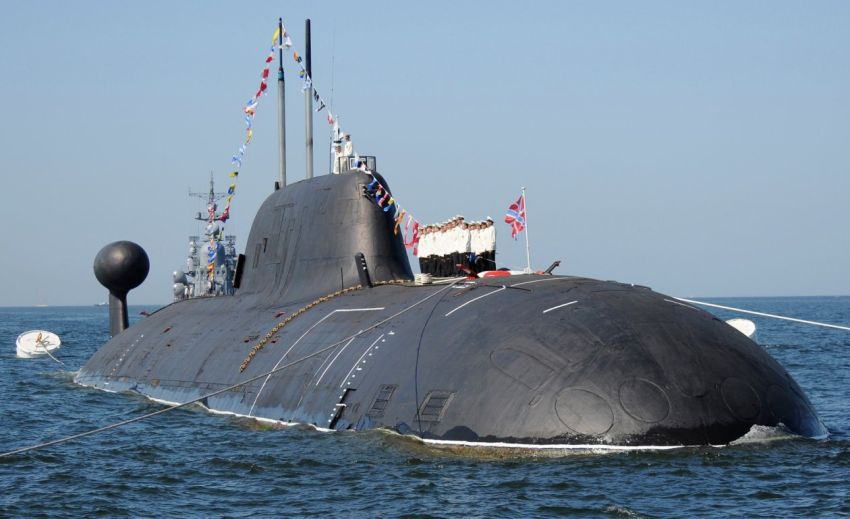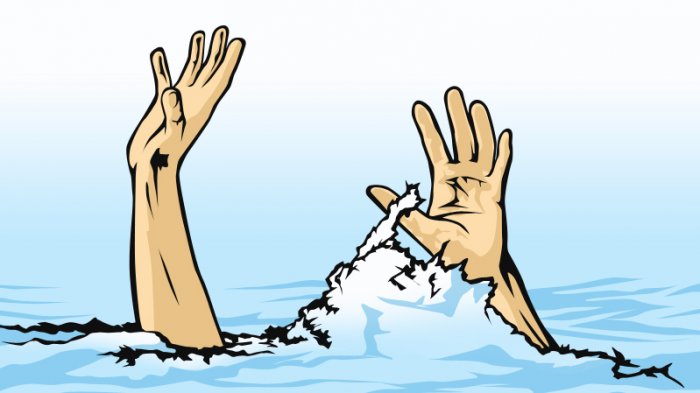THE HUTTON-MDIVANI JADEITE NECKLACE – $27.4 MILLION

Now owned by the Cartier Collection, this famous gemstone jewelry is made of 27 graduated jadeite beads with 18k gold, ruby and yellow diamonds, with a remarkable royal history. Its predecessor, American Socialist and heir Barbara Hutton, was given a gift by her father for her 1933 marriage to Georgian Prince Alexis Mdivani. The necklace was designed specifically for Hutton and remained in the family for five decades until Hutton’s death in 1979. Barbara Hutton is the heir apparent to retail billionaire Frank Winfield Woolworth, who made her the richest woman in the world at 21 years old.
The necklace itself is a special piece of jewelry because such high quality gems usually cannot provide beads more than 10mm in diameter due to the lack of jadeite. With the beads of each necklace more than 15 mm in diameter and all the beads carved from the same stone, the Hutton-Mdivani Jadeite necklace is rare, hence its value.
BLUE MOON OF JOSEPHINE – $48.4 MILLION

This diamond was bought in 2014 by the convicted-felon fugitive Hong Kong billionaire Joseph Lau Luen-hung. He bought it for his seven-year-old daughter Josephine, after whom he named the stone. It is 12.03 carats and cost the felon $48.4 million, the most per carat a diamond of any color has ever sold for.
The Blue Moon of Josephine, discovered in 2014, is another diamond from the mines of South Africa. With a rare crystal blue color, when it was found in the rough by Petra Diamonds, it was 29.6 carats and hard to miss. Its current owner Lau became a felon that same year for bribing a former minister in Macau. He is not serving time in jail, and remains a fugitive, because Macau and Hong Kong do not have an extradition agreement.
L’INCOMPARABLE DIAMOND NECKLACE – $55 MILLION

The set on the bed of 18k gold contains 407.48 carat diamonds, forming a L’Incomparable Diamond necklace. In the center of it is the largest yellow diamond inside known, about the size of an egg. It is now the most valuable necklace in the world, owned by Mouawad, a Swiss luxury goods company and Emirati, sold for $ 55 million as of 2013.
The large diamond in the center of the necklace has a slightly unusual background. A girl in the Democratic Republic of Congo accidentally found it in a mining dump 30 years ago.
OPPENHEIMER BLUE – $57.5 MILLION

Named after Phillip Oppenheimer Oppenheimer Blue weighs 14.62 carats. It is a vibrant blue diamond with emerald cut. The diamond holds almost the same record as the Pink Star: It has been named the largest Fancy Vivid blue diamond by the American Gemological Institute. In 2016, it bid $ 57.5 million to unpublished parties.
The history of the Oppenheimer diamond is largely a mystery, apart from the fact that it was mined somewhere in South Africa, probably in the early 20th century. Further details are not known as it is thought to have come from a De Beers mine and the company has closed its archives.
All that is known is the history of the man named Pich. The Oppenheimer family has been in the diamond business for over a century. The diamond was named especially for Sir Phillip Oppenheimer, who received the stone as a gift for his wife, although details about when it happened and how many are not known. He died in 1995, and the first operation with the diamond took place in 1999. At the moment it weighs a little more, 14.71 carats.
PINK STAR — $71.2 MILLION

The Pink Star diamond measures 59.6 carats, although the original cut was made from 132.5 carat rough diamonds. It was mined by the renowned international corporation of diamond miner De Beers in 1999 from South Africa. After 20 months of cutting, Pink Star has taken on its current shape. The American Institute of Gemology classifies the stone as the largest internal pink diamond known to this day.
Before it became a pink star, this rare gem was known as Steinmetz Pink, where it was exhibited at the Smithsonian Institution as part of its “The Splendor of Diamonds” exhibition. In 2017, it was auctioned for $ 71.2 million to Chow Tai Fook Enterprises in Hong Kong.
PEACOCK BROOCH — $100 MILLION

Peacock Brooch made by Graff Diamonds may not have as much history as Hope Diamond, but it is worth about $ 100 million. It was first released in 2013 at the TEFAF Art Exhibition in the Netherlands. Peacock-shaped hooks with fan blades total 120.81 carats and more than 1,300 stones in white, yellow, blue and water diamonds. Lemons. A rare blue avocado-shaped diamond is in the center and weighs a total of 20.02 carats.
Graff Diamonds was founded in 1960 by Lawrence Graff. The company is now a multi-ethnic jewelry maker whose home is in London. All jewelry from Graff follows the Kimberly process, an ethical model that does not allow the purchase or use of diamonds, which will continue to cause human suffering or conflict. Graff has a number of other expensive jewelry on the market, including the $ 80 million Wittelsback-Graff diamond and the $ 46.2 million Graff Pink.
The peacock’s hiding place and property are not public at this time.
THE HOPE DIAMOND — $250 MILLION

The most expensive and probably the most famous gemstone in the world is the 45.52-carat blue stone known as the Hope Diamond. Experts believe that its unusual blue color is the result of impurities caused by trace amounts of boron atoms.
In addition to its magical appearance, legends about bad luck and the curse of diamonds have created the opposite effect, making it one of the most sought after jewels in history. These legends can be driven by the strange light in diamonds. Its trace amount of boron leaves a stone that emits a red light when removed from all light sources.
Before it became Hope Diamond, this stone was even bigger than it is now. It is thought to have come from the Golkonda mine in southern India. In 1666 it was bought by a French jeweler named Jean-Baptiste Tavernier and renamed the Tavernier Blue. It was soon cut down and renamed French Blue, under which name it was sold in 1668 by Tavernier to King Louis XIV.
In 1792 the French blue was stolen from the royal family and cut again. The largest part of the remains of the diamond was named Hope when it appeared in the London Bank family gems collection in 1839. Their last name is Hope. Since then, it has had several owners, but was eventually sold to a young social billionaire from Washington, Evelyn Walsh McLean, in 1911. When she died (after going through many tragedies that are said to have come from Diamond’s curse), it was sold to a jeweler named Harry Winston in 1949. He visited it for many years before donating it to the Smithsonian Museum of Natural History in 1958. Where it’s still on display.


